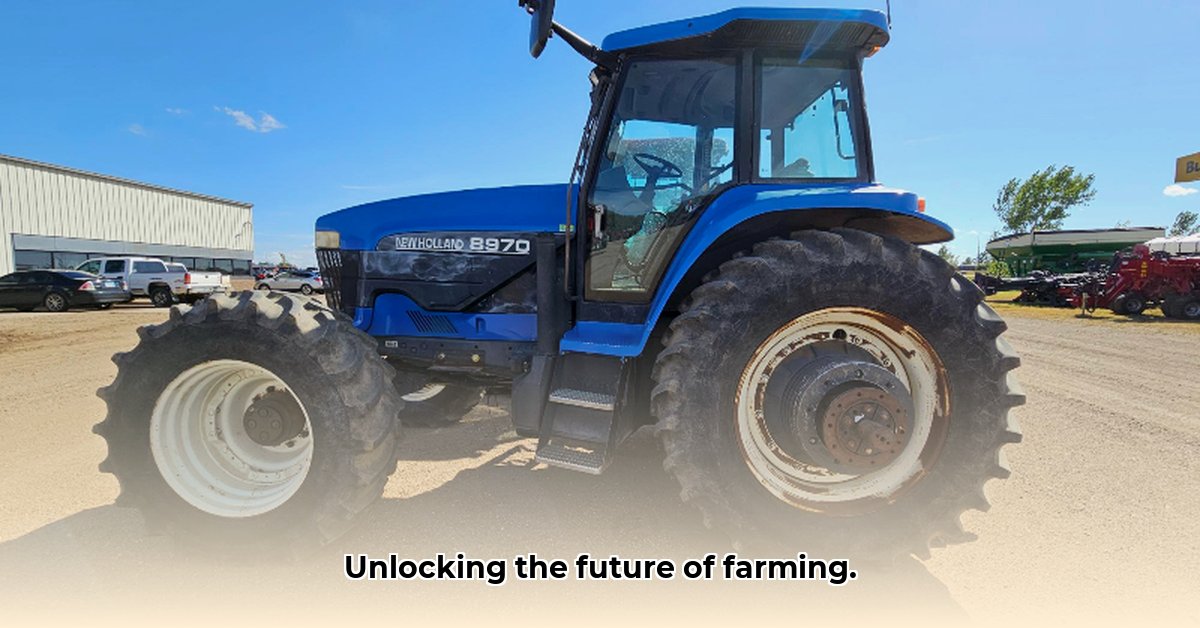
New Holland Tractor 2000: A Historical Perspective on Sustainable Agriculture
The New Holland 2000 tractor, a product of the late 1990s and early 2000s, represents a significant chapter in the evolution of agricultural machinery. For more detailed specifications, check out this dedicated page. While lacking the sophisticated sustainability features of modern models, it provides a valuable lens through which to examine the historical context of eco-conscious farming practices. This article explores its technical specifications, attempts an environmental impact analysis (acknowledging data limitations), and considers its place within New Holland's broader sustainability journey. Understanding the New Holland 2000’s impact—and the challenges inherent in assessing it—helps shape a more sustainable future for agriculture.
A Legacy of Innovation: New Holland's Journey Towards Sustainability
New Holland's history is intertwined with the evolution of farming technology. From early horse-drawn implements to today's precision agriculture systems, the company has played a pivotal role in mechanizing food production. The New Holland 2000, while not explicitly marketed as a "green" machine, reflects the company's gradual shift towards considering environmental impact alongside performance and efficiency. While precise data on the 2000's environmental profile remains scarce, its historical context provides a valuable backdrop against which to assess New Holland's evolving sustainability commitments. How much did fuel efficiency matter back then, and how does that relate to their current focus on sustainability?
Technical Specifications and Features of the New Holland 2000
Detailed specifications for the New Holland 2000 are difficult to find comprehensively online. It was an engine-powered tractor designed for heavy-duty work. It likely featured a diesel engine (common for agricultural tractors of that era), offering substantial horsepower for tasks like plowing, tilling, and hauling. Its construction prioritized ruggedness and reliability, characteristics crucial for consistent performance in demanding agricultural conditions. While lacking the advanced electronics and precision farming technologies of newer models, the 2000 represented a dependable workhorse in its time. Lacking access to detailed blueprints, we are limited in our ability to offer a complete technical review. Precise horsepower, fuel consumption rates, and other specifications are not readily available.
Sustainability Analysis: Assessing the Environmental Impact
Assessing the New Holland 2000's environmental impact presents a significant challenge due to limited data availability. While comprehensive lifecycle assessments (LCAs) are ideal for quantifying a product's overall environmental footprint, such data is rarely available for older machinery. However, we can make some informed inferences:
- Fuel Consumption: Given its age and likely engine technology, the 2000’s fuel consumption was probably higher than modern, more fuel-efficient tractors. This translates to a larger carbon footprint.
- Emissions: Older diesel engines generally produced higher levels of greenhouse gases and other pollutants compared to today's models. Precise emissions data for the 2000 is unavailable, preventing an accurate quantification.
- Manufacturing Processes: Manufacturing processes in the late 1990s and early 2000s had less stringent environmental regulations than those in place today. This could have resulted in a larger environmental impact during the tractor's production phase.
It's crucial to acknowledge the limitations of this analysis. Without access to detailed data on materials, manufacturing processes, fuel consumption figures, and end-of-life management, any conclusions remain speculative. Further research is needed to fully understand the New Holland 2000's complete environmental footprint. This highlights a crucial need for readily available lifecycle assessments for all farming equipment.
Comparative Analysis: Challenges in Assessing Historical Data
Direct comparisons with contemporary competitors are hampered by a lack of consistent data from that era. Finding detailed information on fuel efficiency, emissions, and other sustainability metrics for similar tractors from other manufacturers is difficult. The absence of standardized reporting practices and the difficulty of accessing historical data from various manufacturers make a comprehensive comparative analysis impossible at this time.
Conclusion: Learning from the Past, Building a Sustainable Future
The New Holland 2000, though lacking detailed data for a complete sustainability analysis, serves as a valuable case study. It underscores the importance of:
- Comprehensive lifecycle assessments: These assessments are vital for understanding the full environmental impact of agricultural machinery.
- Data transparency: Manufacturers need to provide more readily available data on their products’ environmental footprint to allow better analysis.
- Continued research: More research is needed to better understand the historical environmental impact of older agricultural machinery, allowing for clearer comparisons between models of different eras and brands.
The New Holland 2000's legacy, therefore, is not just about its technical capabilities but also about its role in highlighting the need for greater transparency and data-driven decision-making in sustainable agriculture. It's a reminder that the journey towards sustainable farming continues, informed by both the lessons of the past and the advancements of the present.